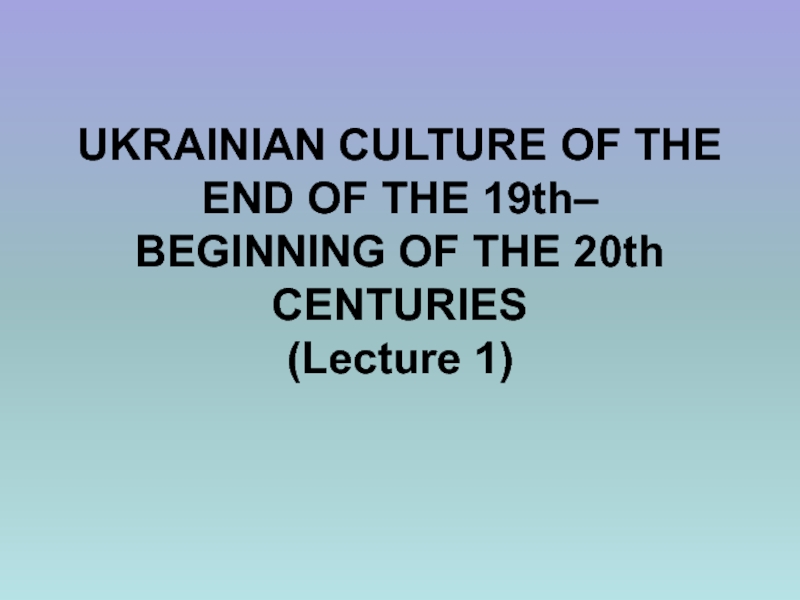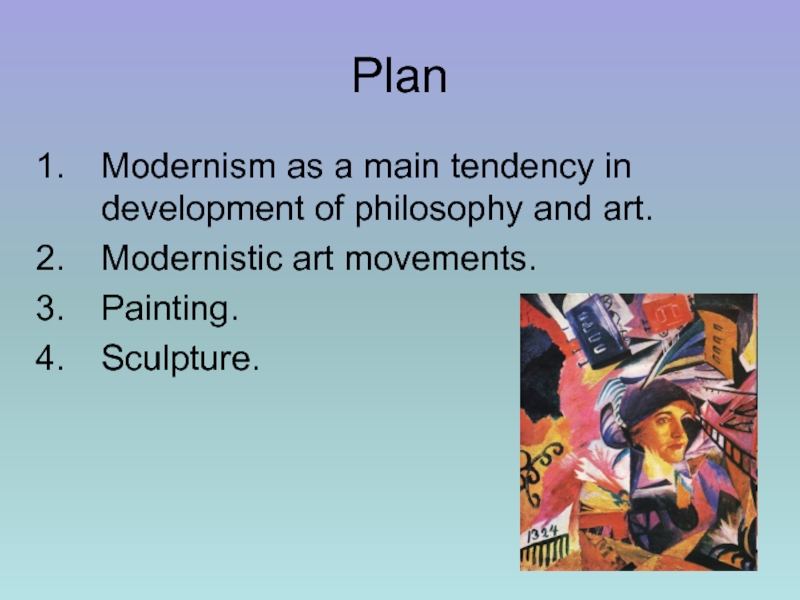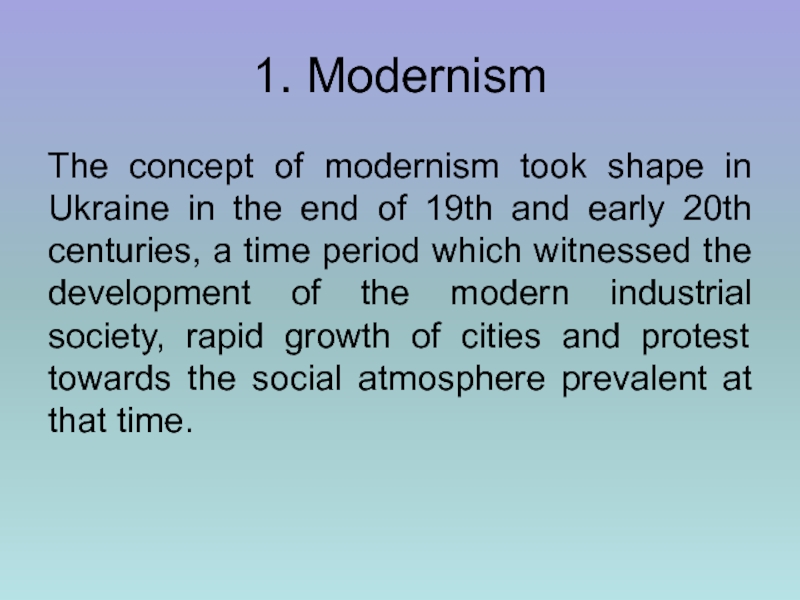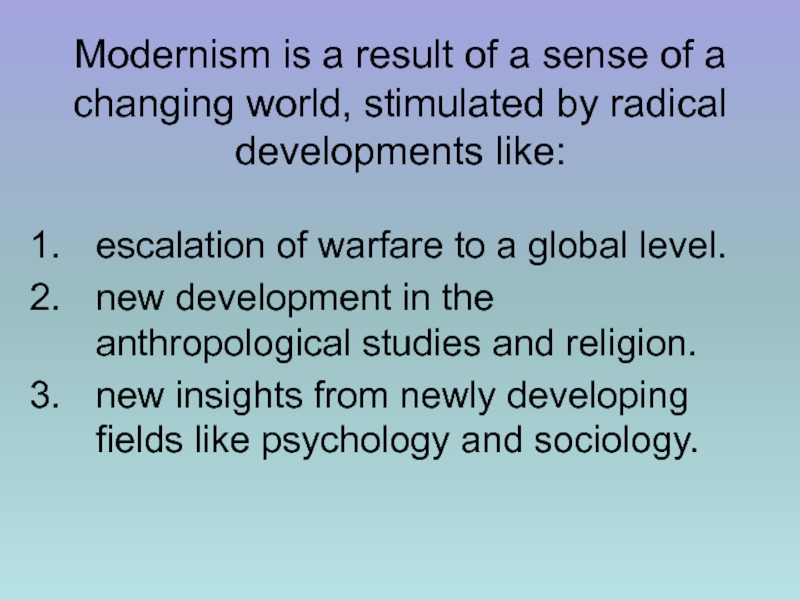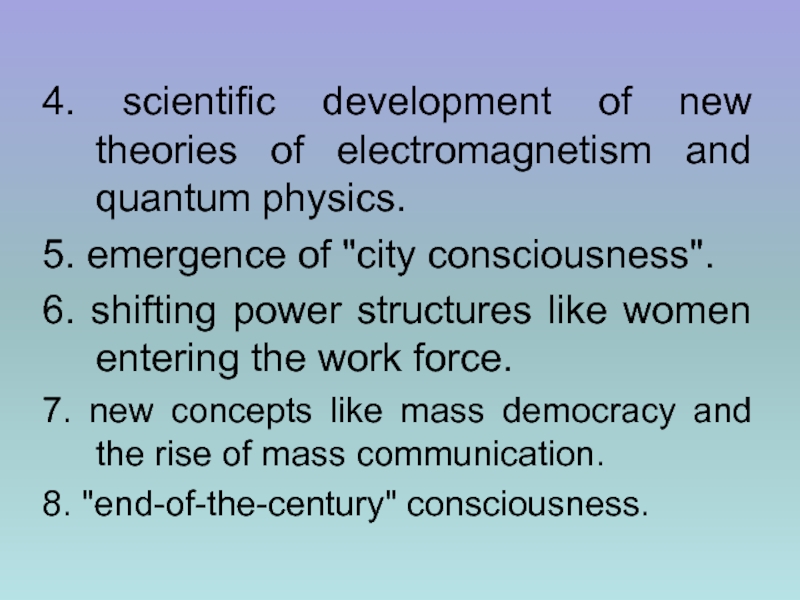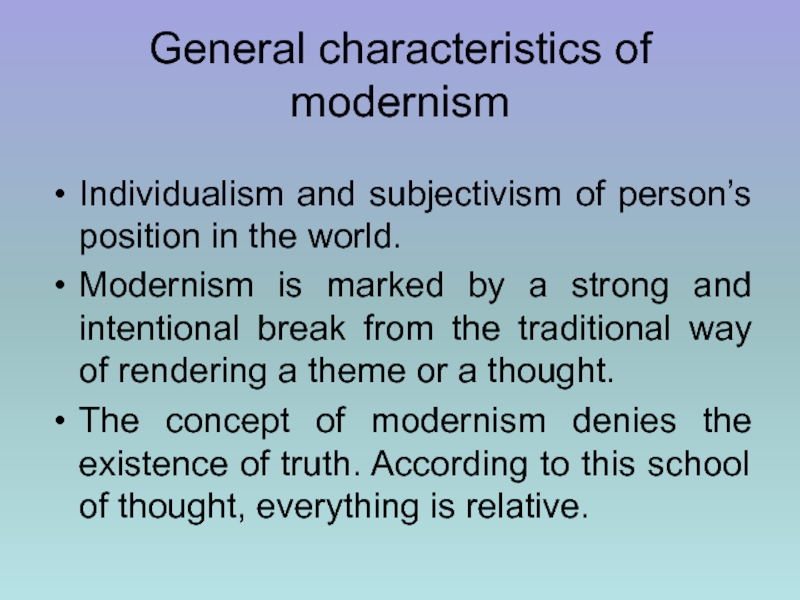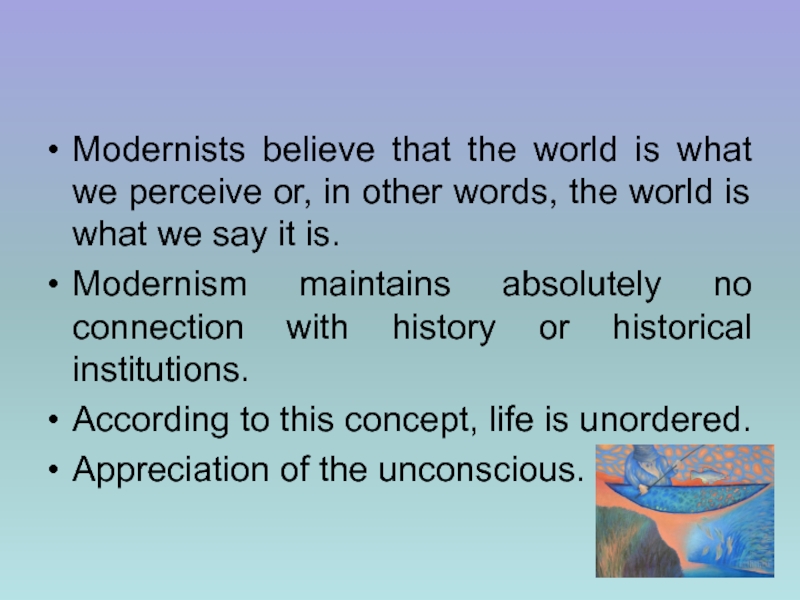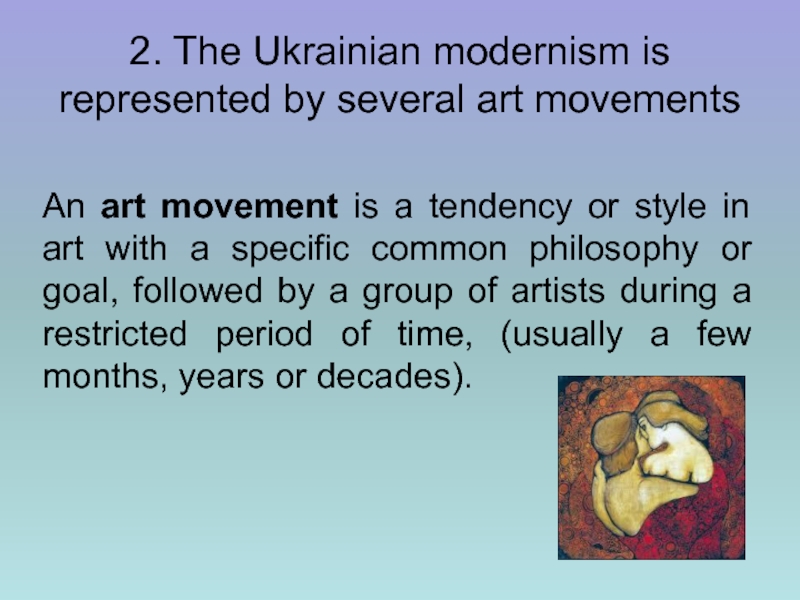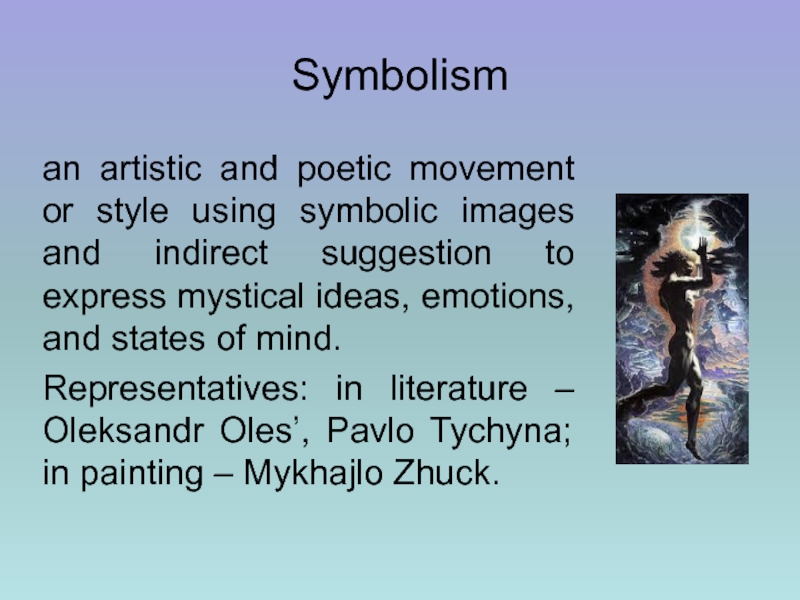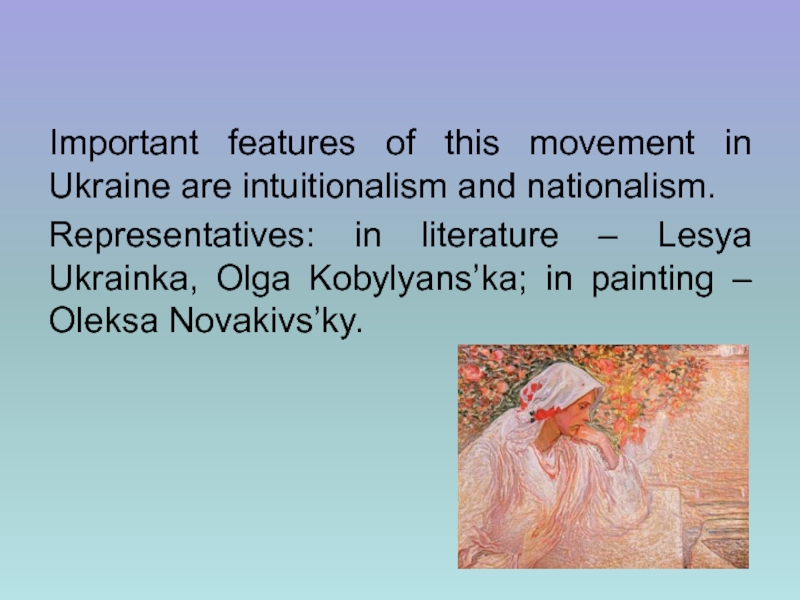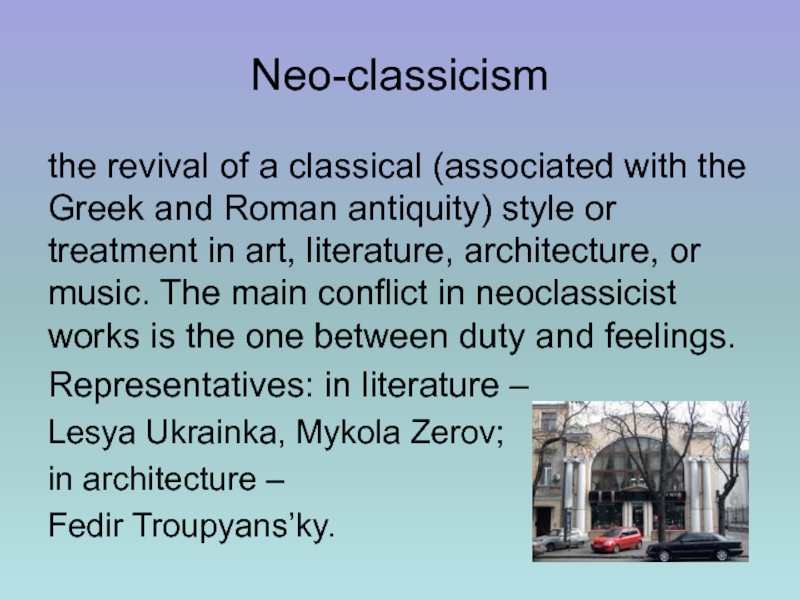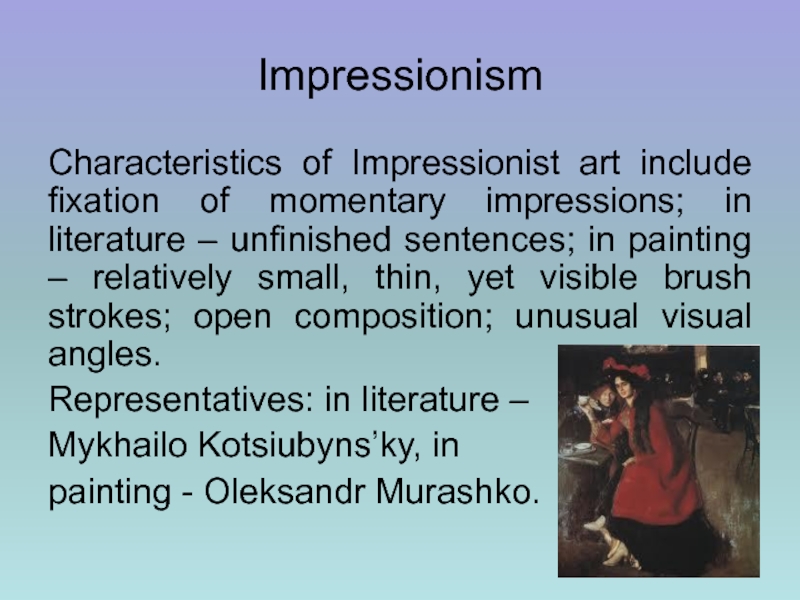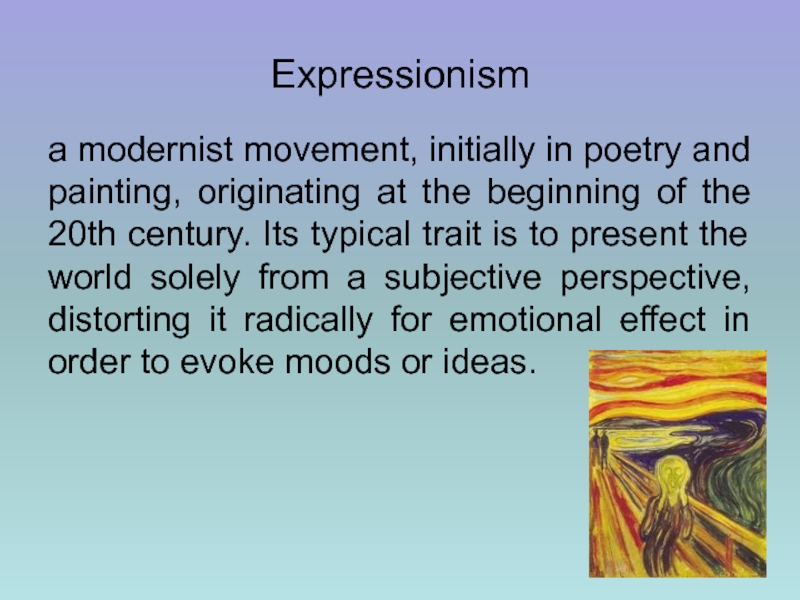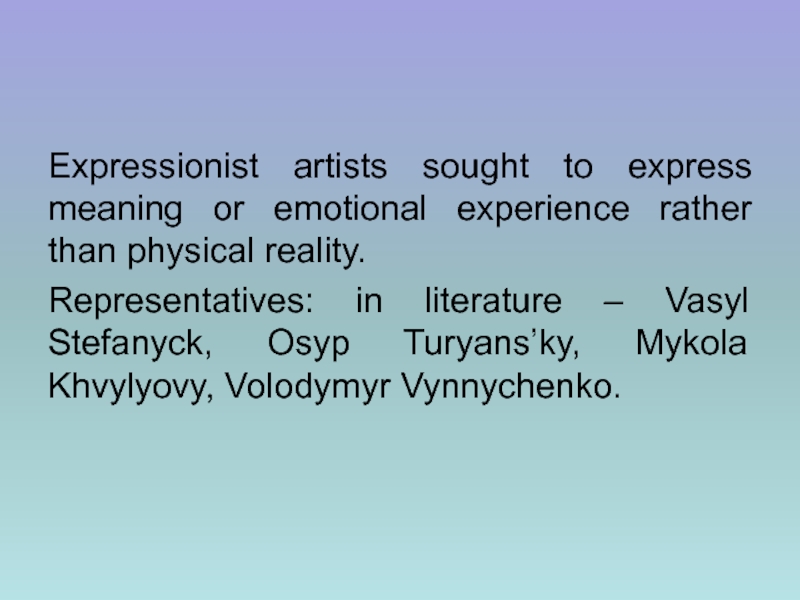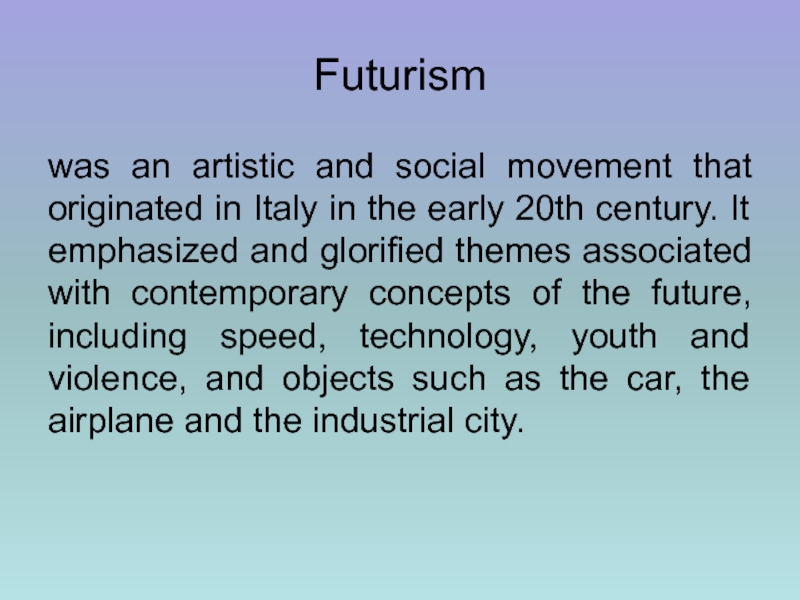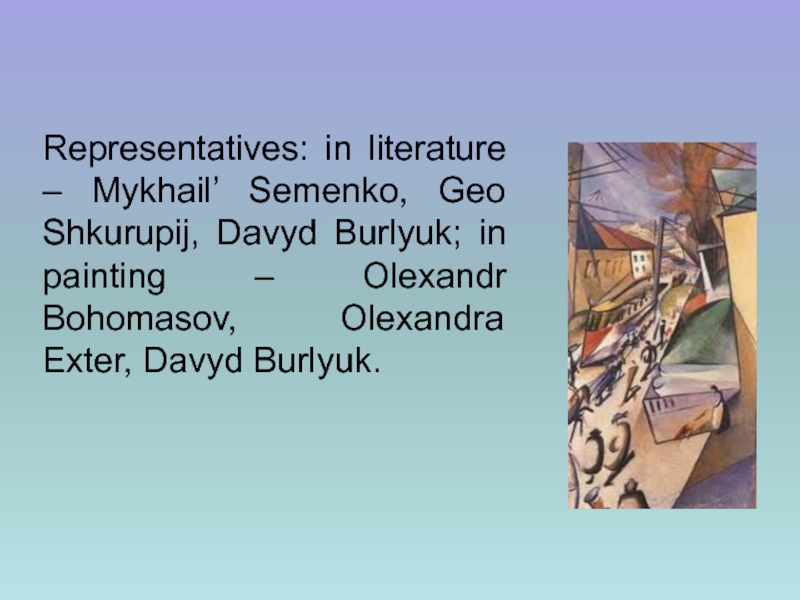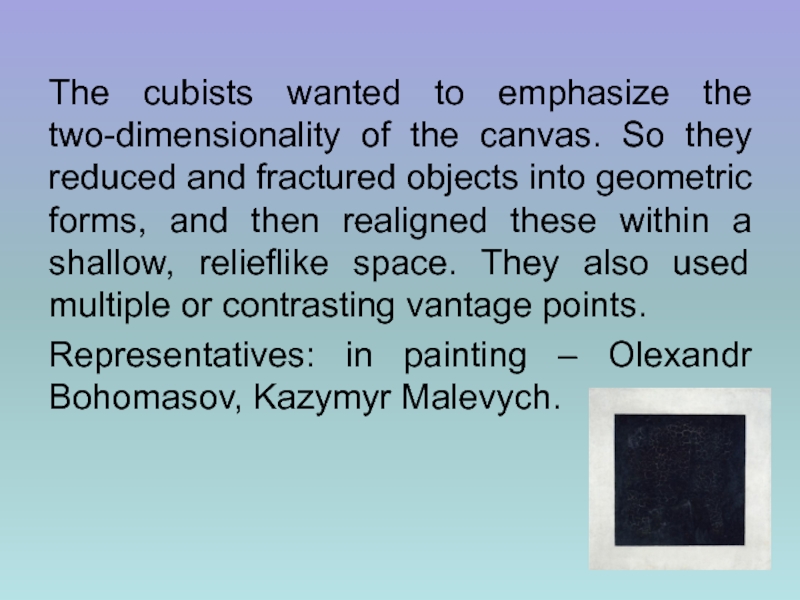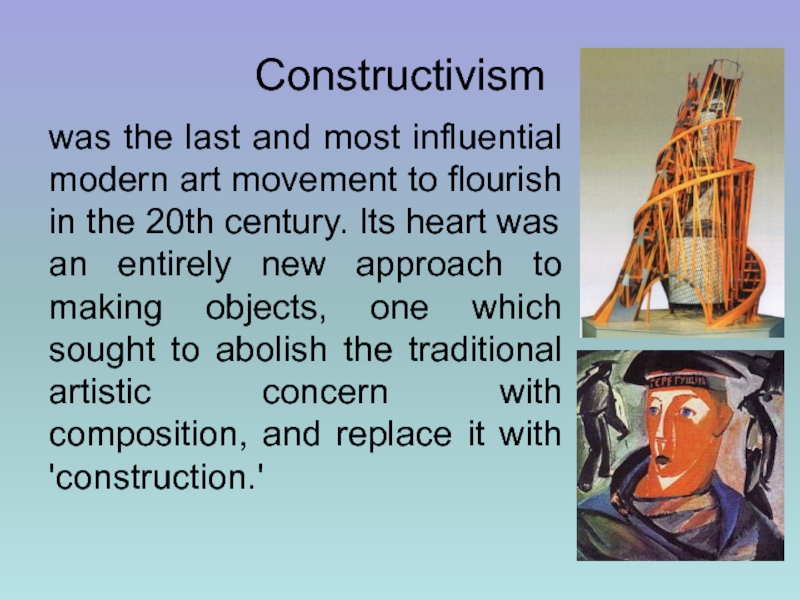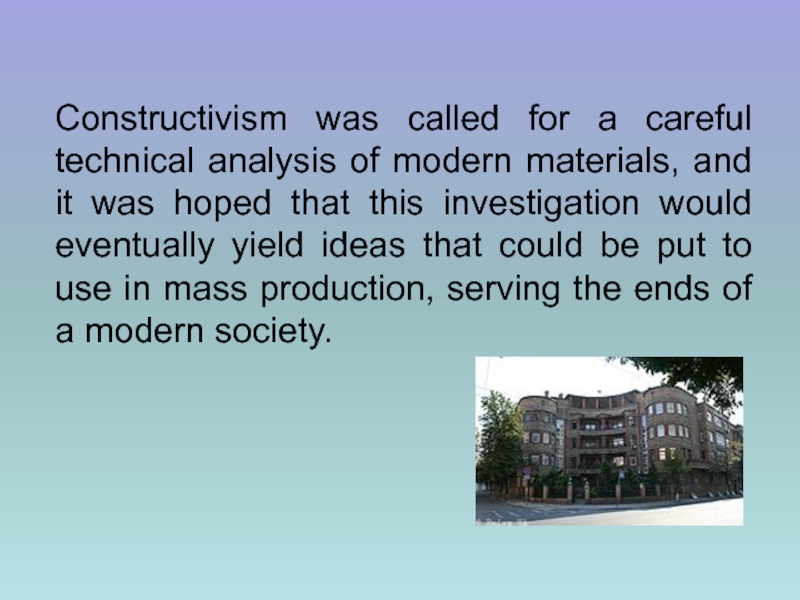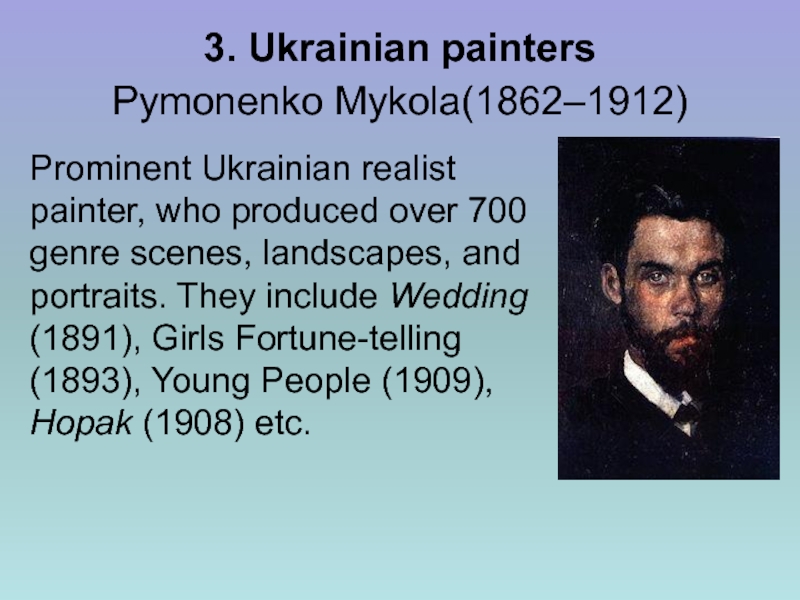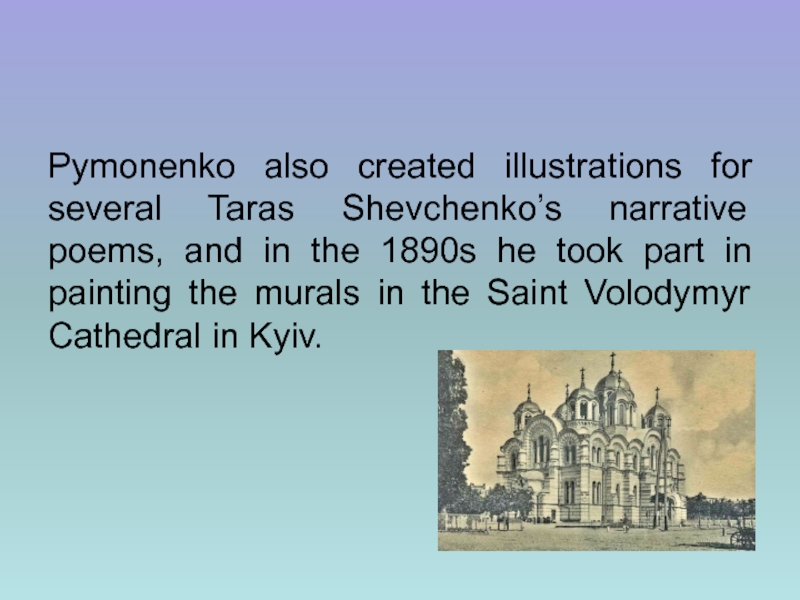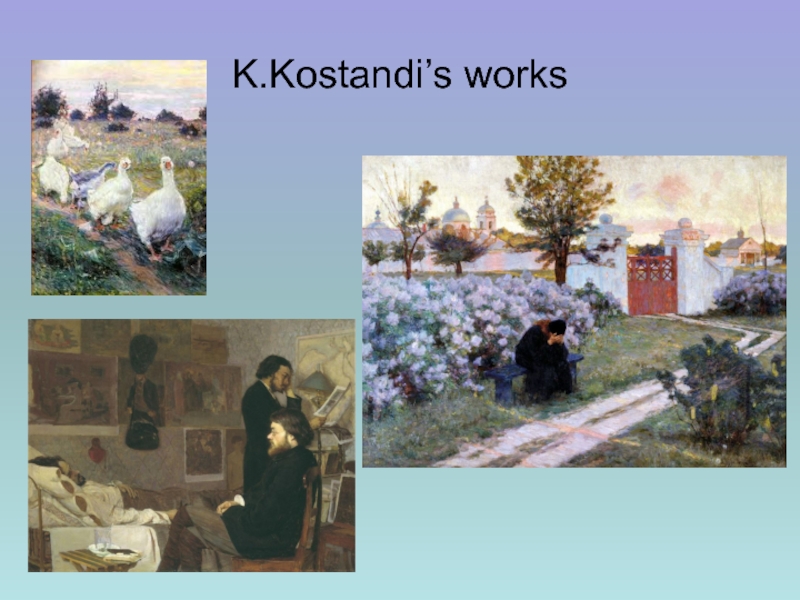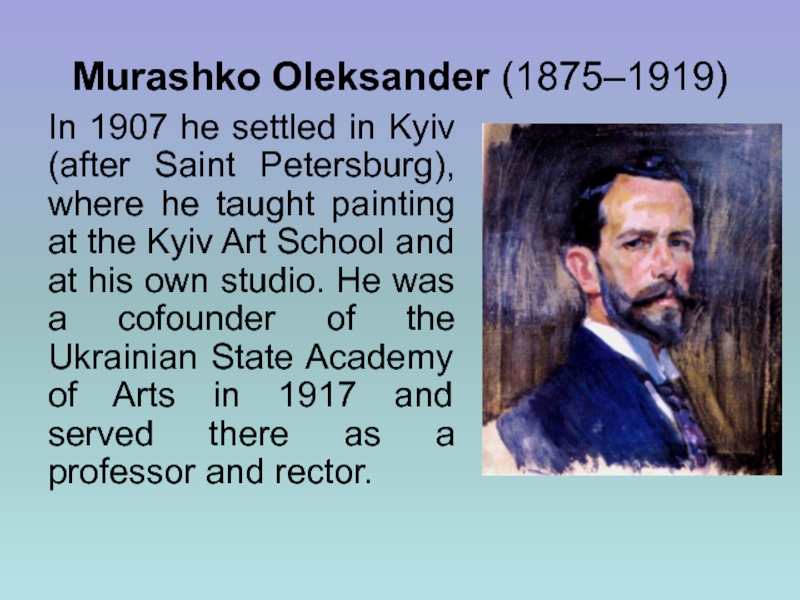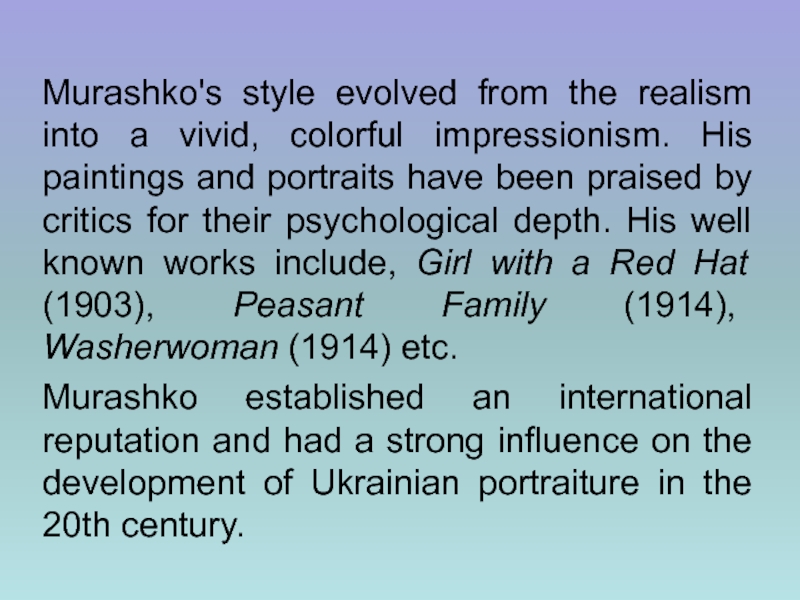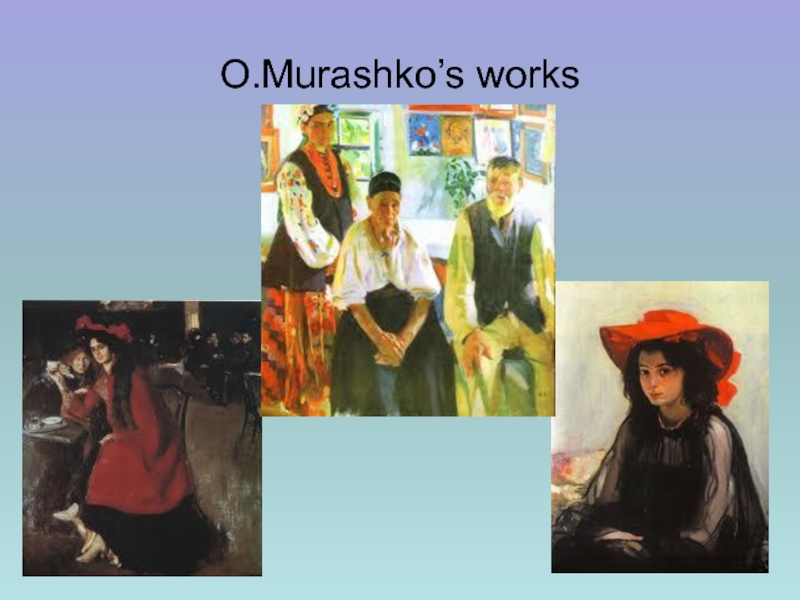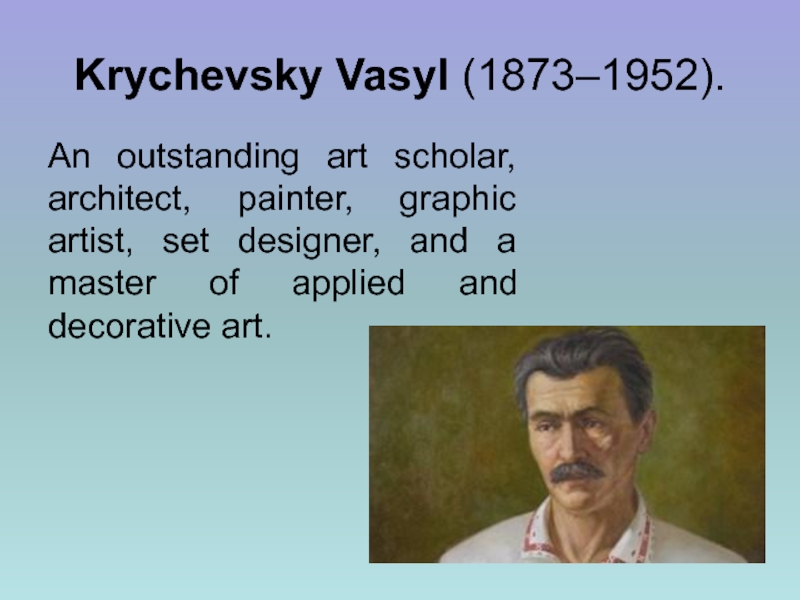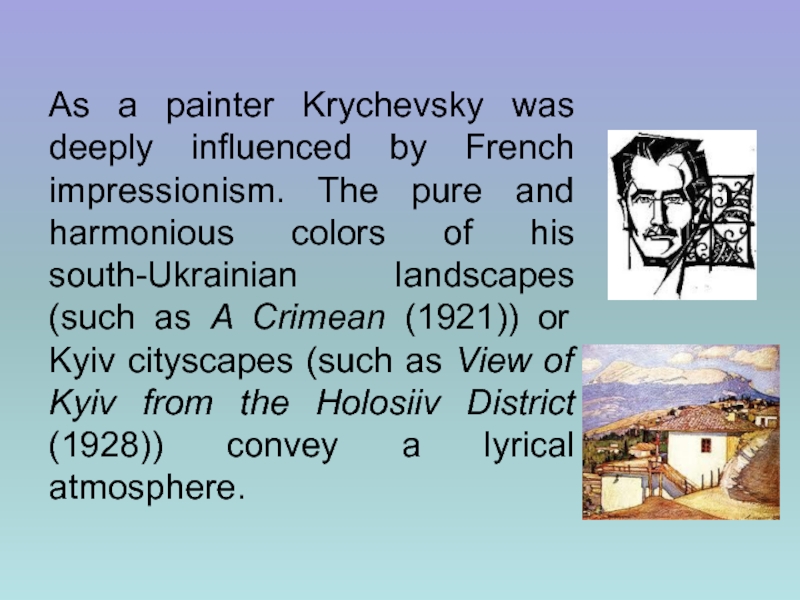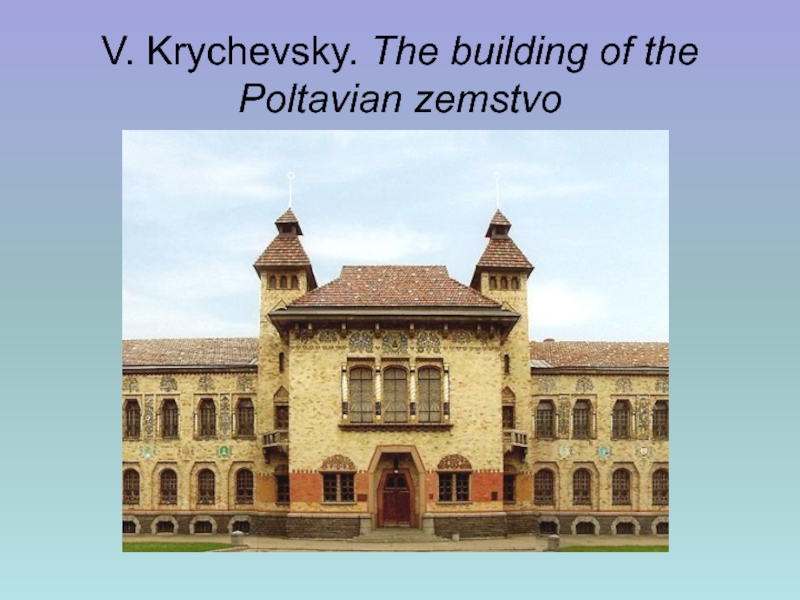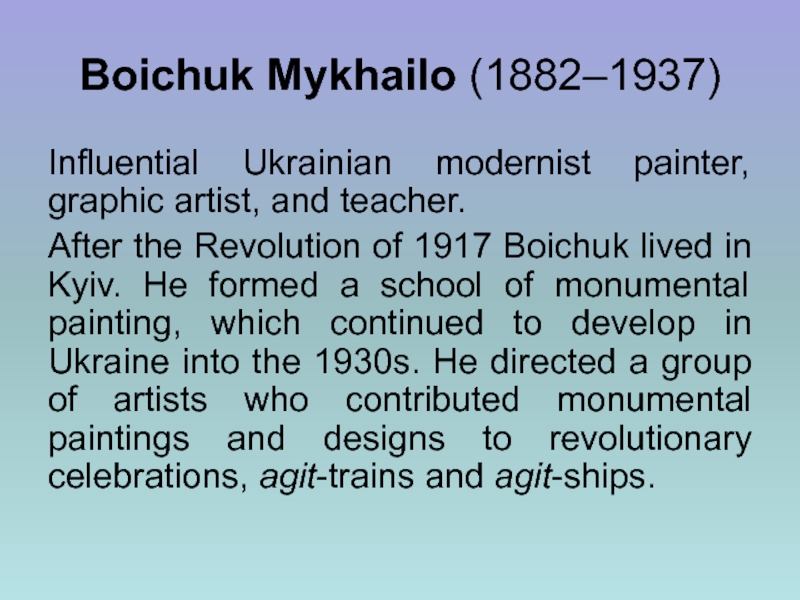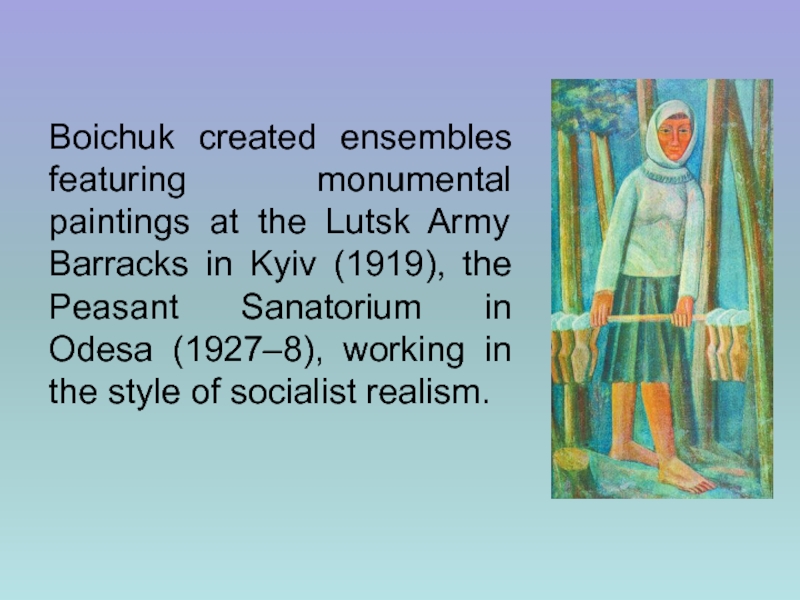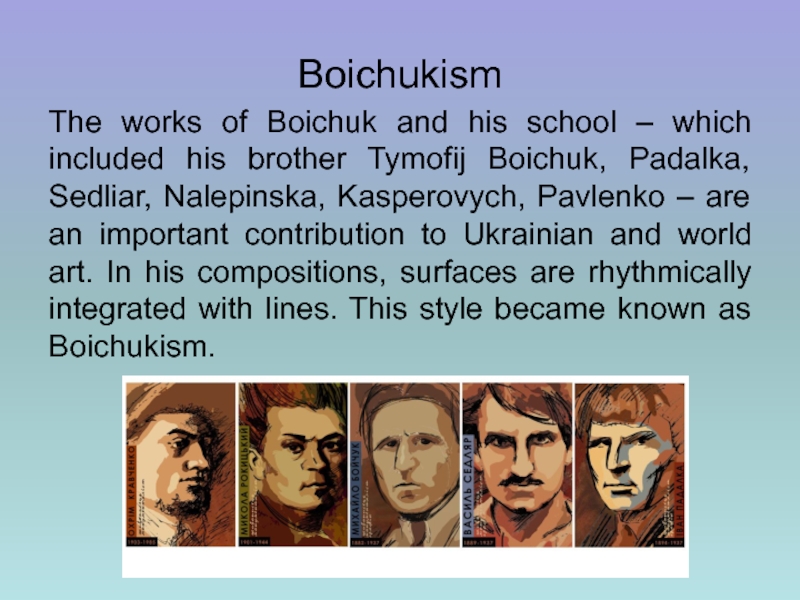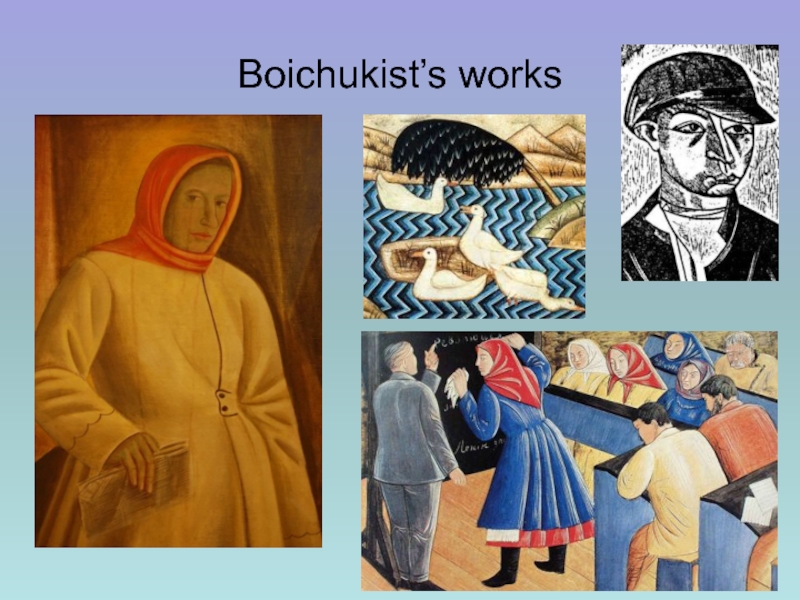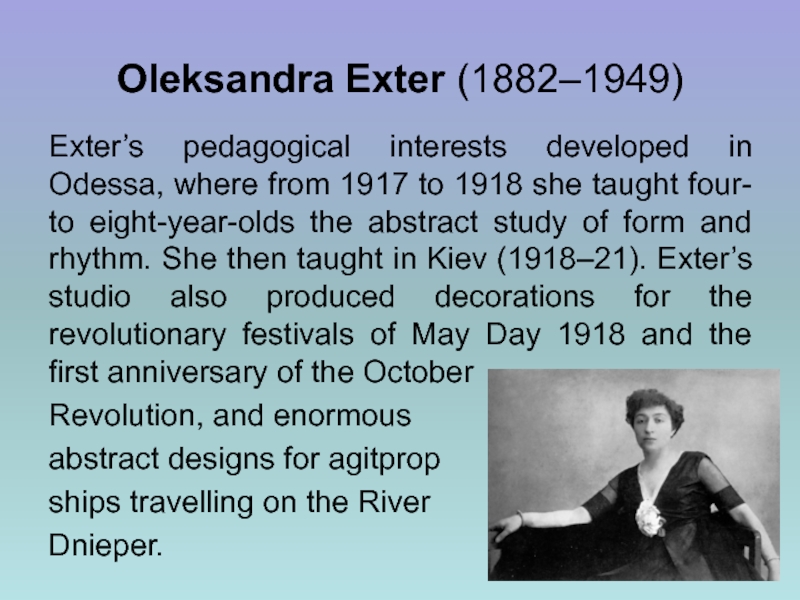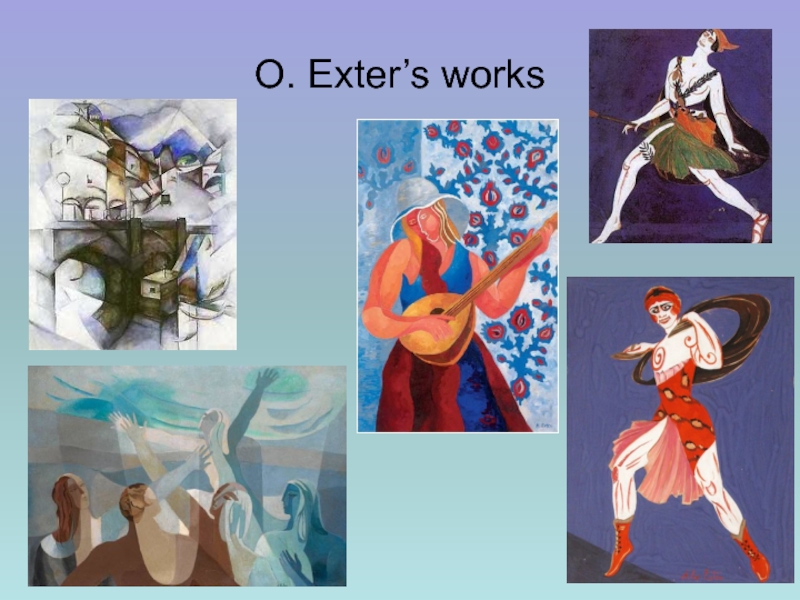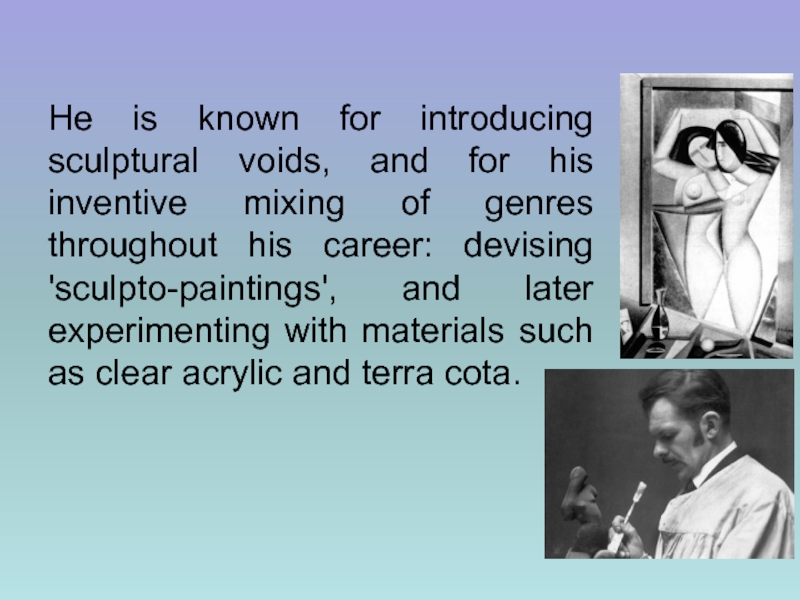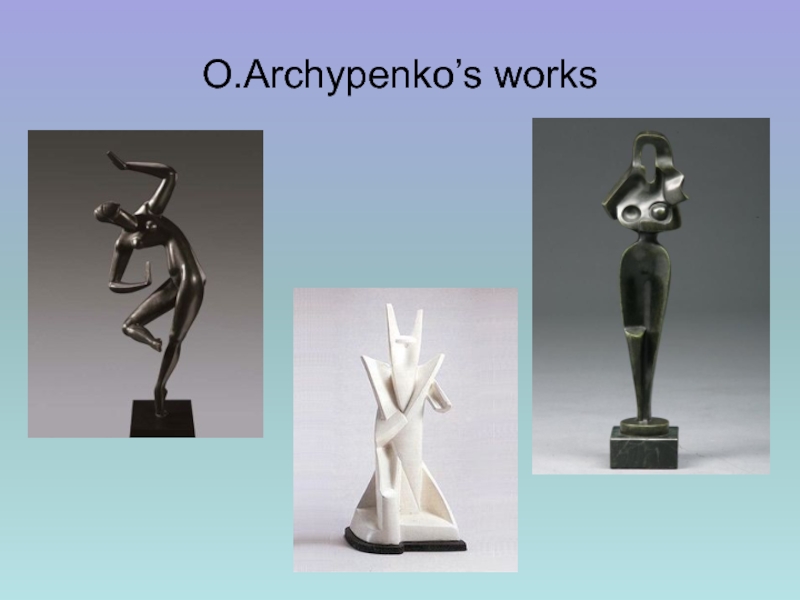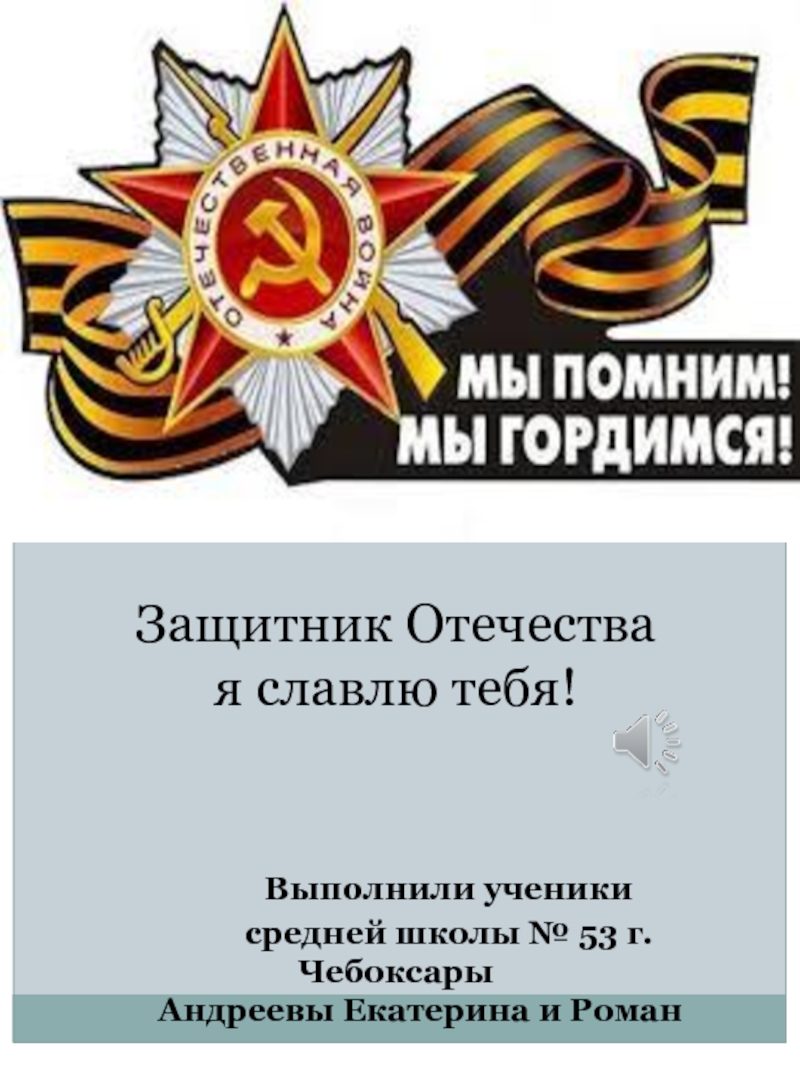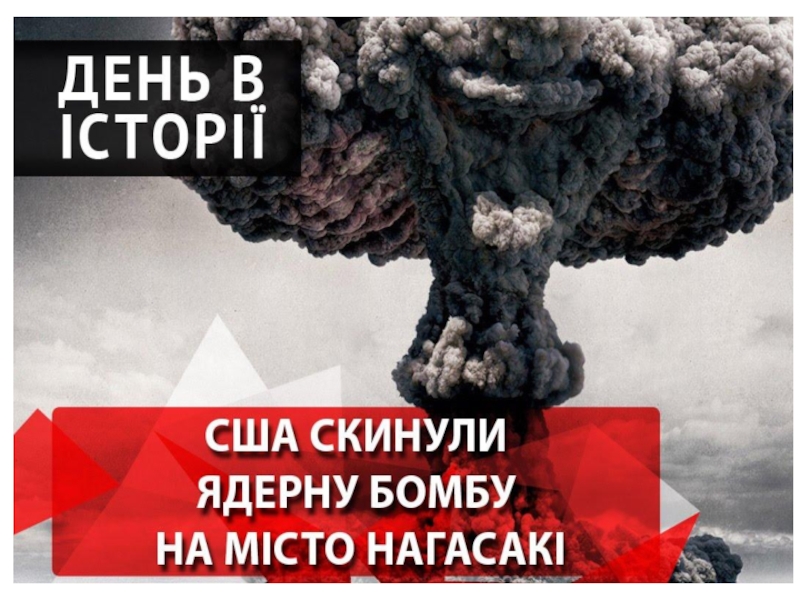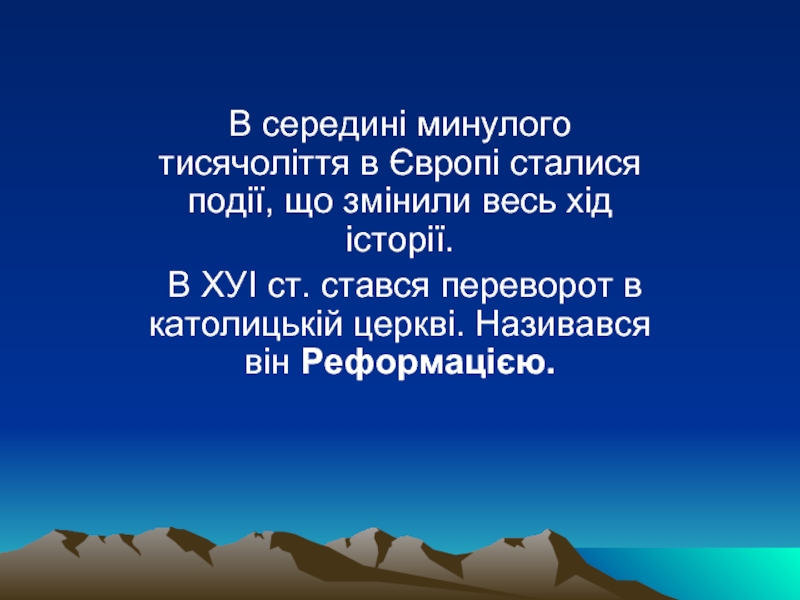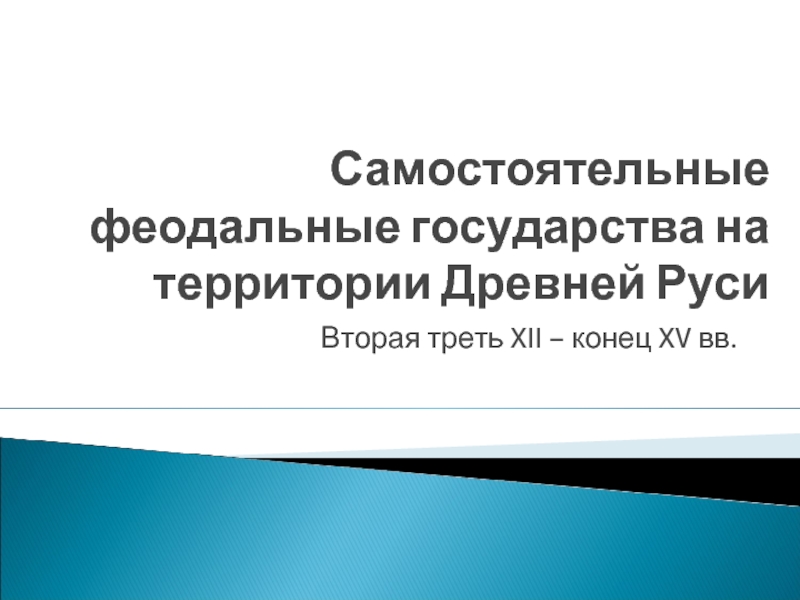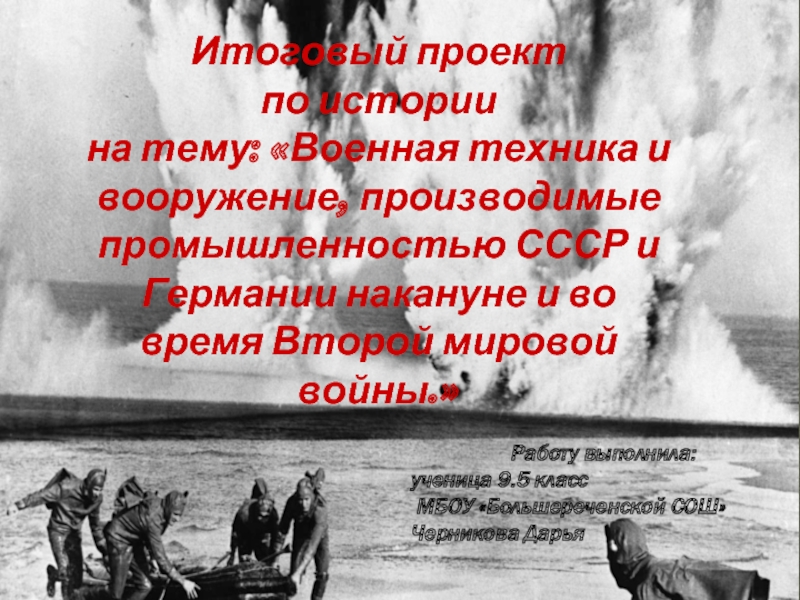- Главная
- Разное
- Дизайн
- Бизнес и предпринимательство
- Аналитика
- Образование
- Развлечения
- Красота и здоровье
- Финансы
- Государство
- Путешествия
- Спорт
- Недвижимость
- Армия
- Графика
- Культурология
- Еда и кулинария
- Лингвистика
- Английский язык
- Астрономия
- Алгебра
- Биология
- География
- Детские презентации
- Информатика
- История
- Литература
- Маркетинг
- Математика
- Медицина
- Менеджмент
- Музыка
- МХК
- Немецкий язык
- ОБЖ
- Обществознание
- Окружающий мир
- Педагогика
- Русский язык
- Технология
- Физика
- Философия
- Химия
- Шаблоны, картинки для презентаций
- Экология
- Экономика
- Юриспруденция
Ukrainian culture of the end of the 19th - beginning of the 20th centuries (lecture 1) презентация
Содержание
- 1. Ukrainian culture of the end of the 19th - beginning of the 20th centuries (lecture 1)
- 2. Plan Modernism as a main tendency in
- 3. 1. Modernism The concept of modernism took
- 4. Modernism is a result of a sense
- 5. 4. scientific development of new theories
- 6. General characteristics of modernism Individualism and subjectivism
- 7. Modernists believe that the world is
- 8. 2. The Ukrainian modernism is represented by
- 9. Symbolism an artistic and poetic movement or
- 10. Neo-romanticism a reaction in general to the
- 11. Important features of this movement in
- 12. Neo-classicism the revival of a classical (associated
- 13. Impressionism Characteristics of Impressionist art include fixation
- 14. Expressionism a modernist movement, initially in poetry
- 15. Expressionist artists sought to express meaning
- 16. Futurism was an artistic and social movement
- 17. Representatives: in literature – Mykhail’ Semenko,
- 18. Cubism Cubism was one of the most
- 19. The cubists wanted to emphasize the
- 20. Constructivism was the last and most influential
- 21. Constructivism was called for a careful
- 22. Ultimately, however, the movement foundered in
- 23. 3. Ukrainian painters Pymonenko Mykola(1862–1912) Prominent
- 24. Pymonenko also created illustrations for several
- 25. M. Pymonenko. The Kyivan Flowers Seller
- 26. Kostandi Kyriak (1852–1921) Lived in Odesa,
- 27. K.Kostandi’s works
- 28. Murashko Oleksander (1875–1919) In 1907 he
- 29. Murashko's style evolved from the realism
- 30. O.Murashko’s works
- 31. Krychevsky Vasyl (1873–1952). An outstanding art
- 32. As a painter Krychevsky was deeply
- 33. V. Krychevsky. The building of the Poltavian zemstvo
- 34. Boichuk Mykhailo (1882–1937) Influential Ukrainian modernist
- 35. Boichuk created ensembles featuring monumental paintings
- 36. M.Boichuk’s works
- 37. Boichukism The works of Boichuk and his
- 38. Boichukist’s works
- 39. Oleksandra Exter (1882–1949) Exter’s pedagogical interests
- 40. O. Exter’s works
- 41. 4. Sculpture Olexander Archypenko (1887-1964) Was
- 42. He is known for introducing sculptural
- 43. O.Archypenko’s works
Слайд 2Plan
Modernism as a main tendency in development of philosophy and art.
Modernistic
art movements.
Painting.
Sculpture.
Painting.
Sculpture.
Слайд 31. Modernism
The concept of modernism took shape in Ukraine in the
end of 19th and early 20th centuries, a time period which witnessed the development of the modern industrial society, rapid growth of cities and protest towards the social atmosphere prevalent at that time.
Слайд 4Modernism is a result of a sense of a changing world,
stimulated by radical developments like:
escalation of warfare to a global level.
new development in the anthropological studies and religion.
new insights from newly developing fields like psychology and sociology.
Слайд 5
4. scientific development of new theories of electromagnetism and quantum physics.
5.
emergence of "city consciousness".
6. shifting power structures like women entering the work force.
7. new concepts like mass democracy and the rise of mass communication.
8. "end-of-the-century" consciousness.
6. shifting power structures like women entering the work force.
7. new concepts like mass democracy and the rise of mass communication.
8. "end-of-the-century" consciousness.
Слайд 6General characteristics of modernism
Individualism and subjectivism of person’s position in the
world.
Modernism is marked by a strong and intentional break from the traditional way of rendering a theme or a thought.
The concept of modernism denies the existence of truth. According to this school of thought, everything is relative.
Modernism is marked by a strong and intentional break from the traditional way of rendering a theme or a thought.
The concept of modernism denies the existence of truth. According to this school of thought, everything is relative.
Слайд 7
Modernists believe that the world is what we perceive or, in
other words, the world is what we say it is.
Modernism maintains absolutely no connection with history or historical institutions.
According to this concept, life is unordered.
Appreciation of the unconscious.
Modernism maintains absolutely no connection with history or historical institutions.
According to this concept, life is unordered.
Appreciation of the unconscious.
Слайд 82. The Ukrainian modernism is represented by several art movements
An art
movement is a tendency or style in art with a specific common philosophy or goal, followed by a group of artists during a restricted period of time, (usually a few months, years or decades).
Слайд 9Symbolism
an artistic and poetic movement or style using symbolic images and
indirect suggestion to express mystical ideas, emotions, and states of mind.
Representatives: in literature – Oleksandr Oles’, Pavlo Tychyna; in painting – Mykhajlo Zhuck.
Representatives: in literature – Oleksandr Oles’, Pavlo Tychyna; in painting – Mykhajlo Zhuck.
Слайд 10Neo-romanticism
a reaction in general to the 'ugly' modern world of machines,
new cities, and profit. Characteristic themes include longing for perfect love, utopian landscapes, romantic death, and history-in-landscape.
Слайд 11
Important features of this movement in Ukraine are intuitionalism and nationalism.
Representatives: in literature – Lesya Ukrainka, Olga Kobylyans’ka; in painting – Oleksa Novakivs’ky.
Слайд 12Neo-classicism
the revival of a classical (associated with the Greek and Roman
antiquity) style or treatment in art, literature, architecture, or music. The main conflict in neoclassicist works is the one between duty and feelings.
Representatives: in literature –
Lesya Ukrainka, Mykola Zerov;
in architecture –
Fedir Troupyans’ky.
Representatives: in literature –
Lesya Ukrainka, Mykola Zerov;
in architecture –
Fedir Troupyans’ky.
Слайд 13Impressionism
Characteristics of Impressionist art include fixation of momentary impressions; in literature
– unfinished sentences; in painting – relatively small, thin, yet visible brush strokes; open composition; unusual visual angles.
Representatives: in literature –
Mykhailo Kotsiubyns’ky, in
painting - Oleksandr Murashko.
Representatives: in literature –
Mykhailo Kotsiubyns’ky, in
painting - Oleksandr Murashko.
Слайд 14Expressionism
a modernist movement, initially in poetry and painting, originating at the
beginning of the 20th century. Its typical trait is to present the world solely from a subjective perspective, distorting it radically for emotional effect in order to evoke moods or ideas.
Слайд 15
Expressionist artists sought to express meaning or emotional experience rather than
physical reality.
Representatives: in literature – Vasyl Stefanyck, Osyp Turyans’ky, Mykola Khvylyovy, Volodymyr Vynnychenko.
Representatives: in literature – Vasyl Stefanyck, Osyp Turyans’ky, Mykola Khvylyovy, Volodymyr Vynnychenko.
Слайд 16Futurism
was an artistic and social movement that originated in Italy in
the early 20th century. It emphasized and glorified themes associated with contemporary concepts of the future, including speed, technology, youth and violence, and objects such as the car, the airplane and the industrial city.
Слайд 17
Representatives: in literature – Mykhail’ Semenko, Geo Shkurupij, Davyd Burlyuk; in
painting – Olexandr Bohomasov, Olexandra Exter, Davyd Burlyuk.
Слайд 18Cubism
Cubism was one of the most influential visual art styles of
the early twentieth century. The Cubist painters rejected the inherited concept that art should copy nature, or that they should adopt the traditional techniques of perspective, modeling, and foreshortening.
Слайд 19
The cubists wanted to emphasize the two-dimensionality of the canvas. So
they reduced and fractured objects into geometric forms, and then realigned these within a shallow, relieflike space. They also used multiple or contrasting vantage points.
Representatives: in painting – Olexandr Bohomasov, Kazymyr Malevych.
Representatives: in painting – Olexandr Bohomasov, Kazymyr Malevych.
Слайд 20Constructivism
was the last and most influential modern art movement to flourish
in the 20th century. Its heart was an entirely new approach to making objects, one which sought to abolish the traditional artistic concern with composition, and replace it with 'construction.'
Слайд 21
Constructivism was called for a careful technical analysis of modern materials,
and it was hoped that this investigation would eventually yield ideas that could be put to use in mass production, serving the ends of a modern society.
Слайд 22
Ultimately, however, the movement foundered in trying to make the transition
from the artist's studio to the factory.
Representatives: in architecture – Pavlo Alyoshyn, Samuil Kravets; in painting – Volodymyr Tatlin.
Representatives: in architecture – Pavlo Alyoshyn, Samuil Kravets; in painting – Volodymyr Tatlin.
Слайд 233. Ukrainian painters
Pymonenko Mykola(1862–1912)
Prominent Ukrainian realist painter, who produced over
700 genre scenes, landscapes, and portraits. They include Wedding (1891), Girls Fortune-telling (1893), Young People (1909), Hopak (1908) etc.
Слайд 24
Pymonenko also created illustrations for several Taras Shevchenko’s narrative poems, and
in the 1890s he took part in painting the murals in the Saint Volodymyr Cathedral in Kyiv.
Слайд 26Kostandi Kyriak (1852–1921)
Lived in Odesa, where he painted and taught
at the drawing school. Kostandi was opposed to every formalist trend. Adhering to a realist style with elements of impressionism, he devoted himself to genre painting, but did some landscape paintong and portrait painting as well.
His works include At a Friend's Sickbed (1884), Geese (1888), Early Spring (1892) etc.
His works include At a Friend's Sickbed (1884), Geese (1888), Early Spring (1892) etc.
Слайд 28Murashko Oleksander (1875–1919)
In 1907 he settled in Kyiv (after Saint
Petersburg), where he taught painting at the Kyiv Art School and at his own studio. He was a cofounder of the Ukrainian State Academy of Arts in 1917 and served there as a professor and rector.
Слайд 29
Murashko's style evolved from the realism into a vivid, colorful impressionism.
His paintings and portraits have been praised by critics for their psychological depth. His well known works include, Girl with a Red Hat (1903), Peasant Family (1914), Washerwoman (1914) etc.
Murashko established an international reputation and had a strong influence on the development of Ukrainian portraiture in the 20th century.
Murashko established an international reputation and had a strong influence on the development of Ukrainian portraiture in the 20th century.
Слайд 31Krychevsky Vasyl (1873–1952).
An outstanding art scholar, architect, painter, graphic artist,
set designer, and a master of applied and decorative art.
Слайд 32
As a painter Krychevsky was deeply influenced by French impressionism. The
pure and harmonious colors of his south-Ukrainian landscapes (such as A Crimean (1921)) or Kyiv cityscapes (such as View of Kyiv from the Holosiiv District (1928)) convey a lyrical atmosphere.
Слайд 34Boichuk Mykhailo (1882–1937)
Influential Ukrainian modernist painter, graphic artist, and teacher.
After the Revolution of 1917 Boichuk lived in Kyiv. He formed a school of monumental painting, which continued to develop in Ukraine into the 1930s. He directed a group of artists who contributed monumental paintings and designs to revolutionary celebrations, agit-trains and agit-ships.
Слайд 35
Boichuk created ensembles featuring monumental paintings at the Lutsk Army Barracks
in Kyiv (1919), the Peasant Sanatorium in Odesa (1927–8), working in the style of socialist realism.
Слайд 37Boichukism
The works of Boichuk and his school – which included his
brother Tymofij Boichuk, Padalka, Sedliar, Nalepinska, Kasperovych, Pavlenko – are an important contribution to Ukrainian and world art. In his compositions, surfaces are rhythmically integrated with lines. This style became known as Boichukism.
Слайд 39Oleksandra Exter (1882–1949)
Exter’s pedagogical interests developed in Odessa, where from
1917 to 1918 she taught four- to eight-year-olds the abstract study of form and rhythm. She then taught in Kiev (1918–21). Exter’s studio also produced decorations for the revolutionary festivals of May Day 1918 and the first anniversary of the October
Revolution, and enormous
abstract designs for agitprop
ships travelling on the River
Dnieper.
Revolution, and enormous
abstract designs for agitprop
ships travelling on the River
Dnieper.
Слайд 414. Sculpture
Olexander Archypenko (1887-1964)
Was a Ukrainian sculptor and graphic. Associated
with the cubist movement, Archipenko departed from the neoclassical sculpture of his time and used negative spase to create a new way of looking at the human figure, showing a number of views of the subject simultaneously.
Слайд 42
He is known for introducing sculptural voids, and for his inventive
mixing of genres throughout his career: devising 'sculpto-paintings', and later experimenting with materials such as clear acrylic and terra cota.
